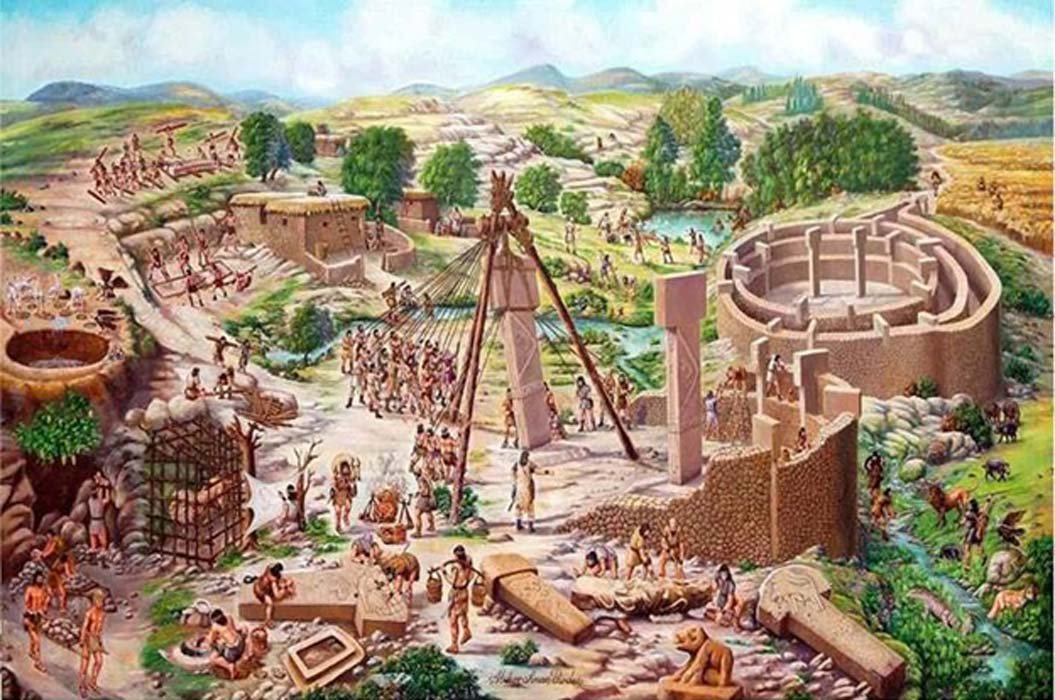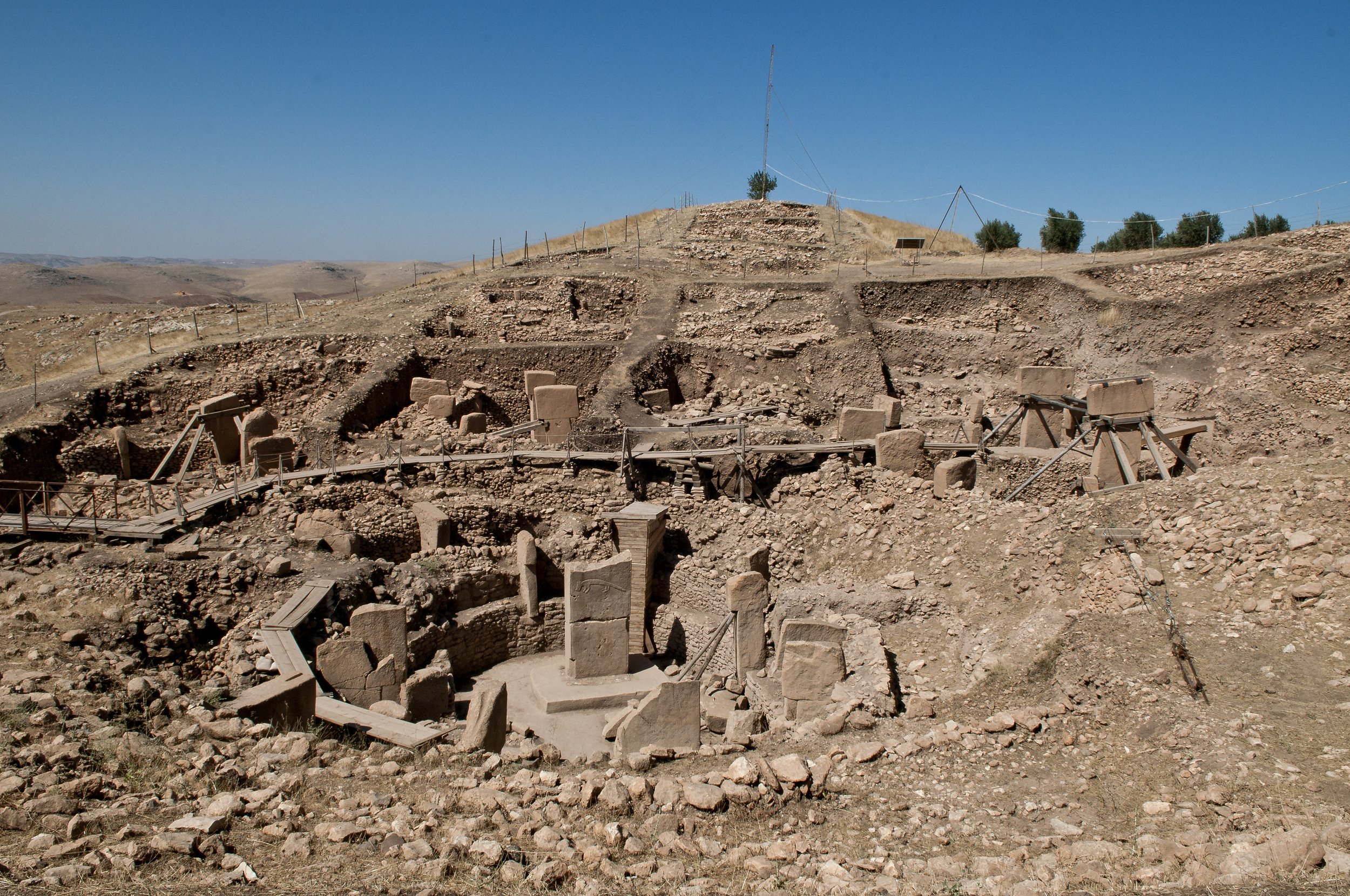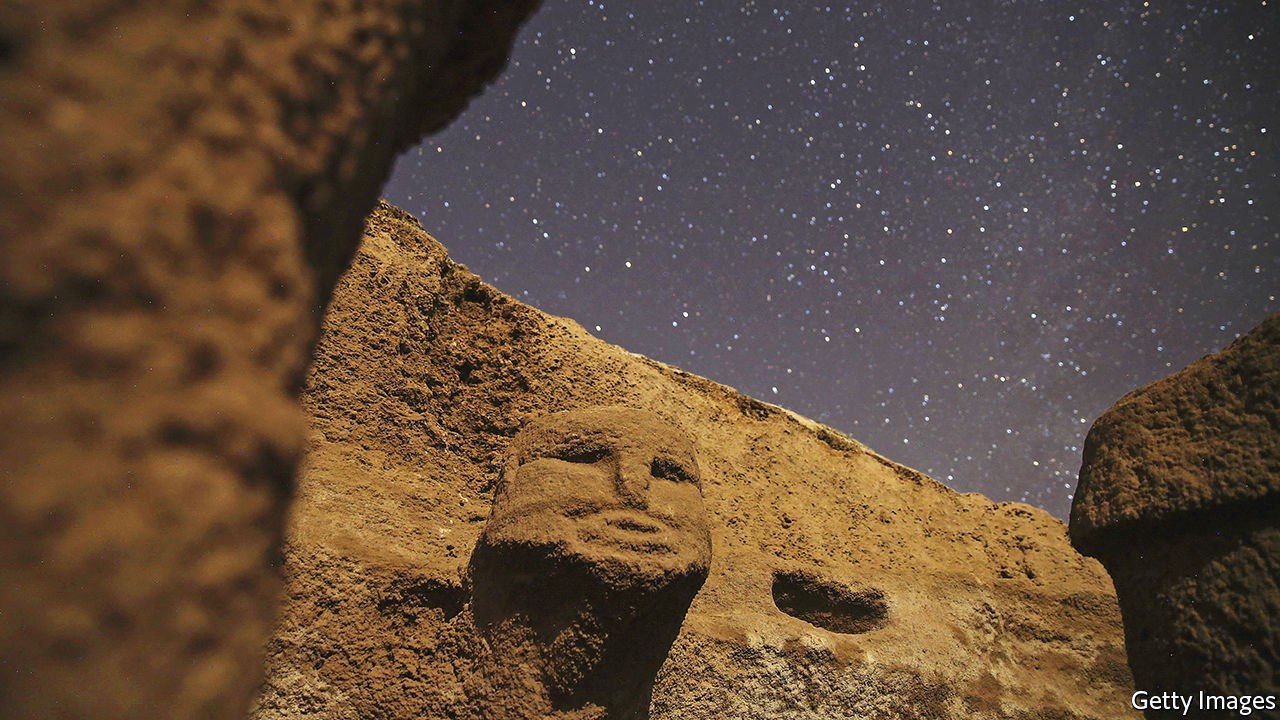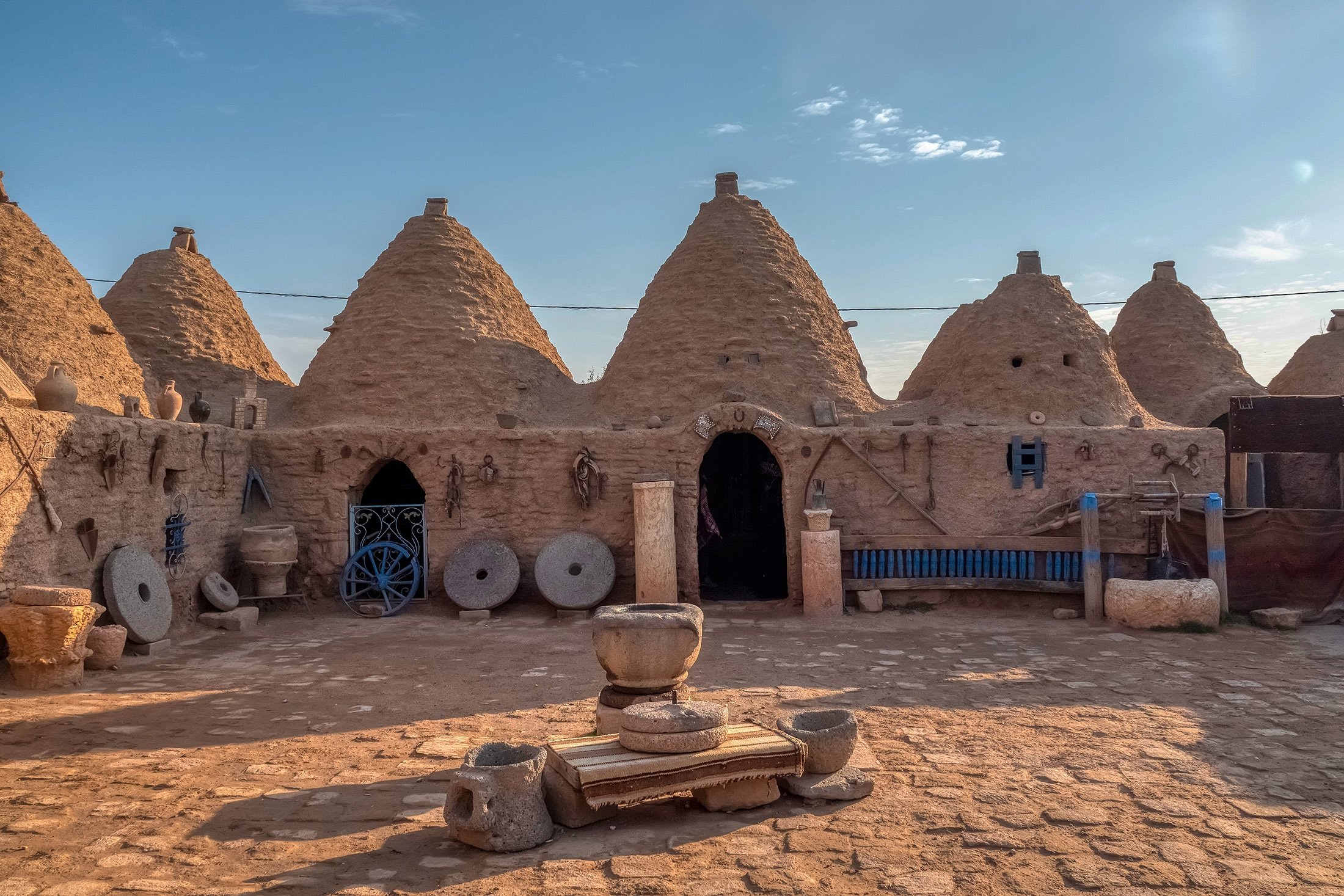Sanliurfa is known as ‘The City of Prophets’ due to its ancient and Biblical history. It’s also home to the most ancient civilization ever discovered with sites like Gobekli Tepe, Karahan Tepe, and the rest of the Tas Tepeler trail.
Here are some notable places in the area
A BRIEF HISTORY OF SANLIURFA
It is not easy to write a brief history of Şanlıurfa as the upper Mesopotamia is one of the oldest settlement areas of the world. The prehistoric discoveries, especially over the last 25 years, indicates that the recorded history of Şanlıurfa dates as back as about 12,000 years.
Thanks to Göbeklitepe, Karahan Tepe, Nevali Çori settlements and the “Urfa Man” Statue unhearted at the city centre, we can tell that Şanlıurfa is one of the earliest and most important places of the world in terms of the prehistoric settlements and civilisation history.
For the very first time, our prehistoric hunter-gatherer ancestors of about 12,000 years ago started, in these lands, to build worship places such as Göbeklitepe, to engage in agriculture by cultivating wild wheat on the steppes of Karacadağ, and to form their first political, social and religious organisation.
Since the early ages, Şanlıurfa was ruled by many different civilizations: Elbas, Akkadians, Babylons, Hitites, Hurrians, Mittanis, Aramaeans, Assyrians, Persians, Macedonians, and Romans, and was invaded by Sassanians, Goths, and Mongols.
During the Byzantine period, the city was rebuilt and continuously changing rulers, between the Crusaders and the Muslims.
Şanlıurfa region was occupied by Macedonians between the years of 332-312 BC during the expeditions of Alexander the Great. When Alexander died, the city remained under the rule of the dynasty of his commander Selefkos, and was named as Edessa which means “abundant in water” in Greek language by Seleukos Nikator I in 302 BC.
Between 132 BC and 244 AD, the city was ruled by an Assyrian kingdom and named Oshroene; the Assyrian kingdom was very important in the history of Christianity because it was the first kingdom to accept Christianity religion at state level. It is in fact believed that the Assyrian King Abgar Ukkama V, once he received a message from Prophet Jesus, declared to accept Christian religion for him and for all the people of his Kingdom. It is also believed that Prophet Jesus, in return, wrote King Abgar Ukkama V an epistle extending his blessing to Oshroene city, and delivered, by the means of his apostle Thomas, a gift to the King,; the gift was a towel, and it is believed that a portrait of Jesus face, after wiping, miraculously appeared on the towel,.
After the last Assyrian king of Edessa was sent to Rome with his family in 243 AD, the area entirely came under the domination of Rome. The Abgar Kingdom was overthrown by the Romans in 244 AD and Urfa became an area of conflicts and changed rulers many times between the Romans and the Parthians (Persians). From 639 AD, when the Islamic armies took the control of the city, until 1031, when the Byzantines took over the control, Şanlıurfa was ruled by many Islamic States: Ummayads, Abbasids, Hamdanis, Numeyris and Mervanis. During the Great Seljuk Empire (a Turkish state) period, Melik Shah the Sultan sent his armies to Urfa and conquered the city in 1087. The sovereignty of the Great Seljuk Empire, did not last long, and during the First Crusade, the commander of the Crusaders Count Baudouin occupied Urfa and founded the County of Edessa in 1098. The Crusader sovereignty, which lasted almost 50 years, was ended by İmadüddin Zengi, a Turkish Atabeg (title of nobility) and by the Commander of Mosul on a Christmas day in 1144. The victory against the Crusaders was welcomed with much enthusiasm by the Islamic world.
Until the Mongolian occupation in 1244, Şanlıurfa changed again rulers, among many Turkish nations such as: Ayyubids, Anatolian Seljuks and Harezmis. Since then, Sanliurfa Region has been a place of constant conflicts among many Mongolian, Turkmen, Arab and Persian states and tribe chiefs, until it was conquered by the Ottoman Empire in 1517. With the arrival of the Ottomans, political stability was achieved and Urfa remained under the Ottoman control for about 400 years.
After the defeat of the Ottoman Empire at the end of First World War, Urfa was occupied first by The British and afterwards by the French armys in 1919. As already mentioned, Urfa people organised their own resistance and defeated the French army on 11th April 1920 and, in 1923, became part of the new founded Republic of Turkey.
Today, Şanlıurfa is one of the most important agricultural and tourism cities of Turkey. With the construction of the Atatürk Dam in the 1980’s and the introduction of South-eastern Anatolian Project (GAP), a land of thousands of hectares was irrigated, and a large number of agricultural products, in particular wheat, barley, lentil, cotton, and pistachio, are cultivated on the fertile lands of upper Mesopotamia.
In addition of being an important centre of agriculture, Şanlıurfa today is a significant tourism destination, offering to its guests a wide range of experiences with its noticeable tourist attractions such as: the Şanlıurfa Archaeology Museum Complex (the Archaeological Museum and the Haleplibahçe Mosaic Museum), Balıklı Lake, Göbeklitepe, Harran and the Tek Tek Mountains National Park, Birecik and Halfeti, the traditional music and costumes, the rich faith background (from polytheistic to monotheistic religions) and its delightful cuisine.
Gobekli Tepe
Göbeklitepe is located 20 km northeast of the city centre of Sanliurfa, in the easternmost part of Germüş mountain chain. Recorded for the first time by the archaeologists in 1964, the excavations started by the German archaeologist Klaus Schmidt in 1995, at the time of the rescue excavations of Atatürk Dam. In the first surface research, numerous Paleolithic hand tools made from flint stones were found. Schmidt attention was attracted by the fact that, while the hills around the site were covered with hard rocks, Göbeklitepe was, on the contrary, covered with superimposed soil. Later on, when the upper part of one of the T shaped pillars was found among the stones cleaned from the fields by the villagers the archaeologist decided to start excavating the full area. The first excavations was carried out between 1995-1998, and the archaeologist Klaus Schmidt understood immediately the importance of the place that was discovered: the world’s oldest monumental temple.
Radio carbon analyses were conducted showing that Göbeklitepe dated back to 9600 BC meaning at least 12,000 years old: 6000 years older than Stonehenge of Great Britain, and 7000 years older than the Egyptian Pyramids. When Göbeklitepe was built, human beings were still foragers. According to the analyses carried out on the collected animal bones, there were no domesticated animals, apart from dogs: this means that no draft animals, which could carry the columns from the quarry, were utilized. The most technological tool used during the construction of Göbeklitepe, were flint stone tools used for sculpting of limestone columns, whose weight could reach up to 7 tons. The Iron Age was not started yet and the local inhabitants did not know yet how to use metals.
Klaus Schmidt claims that theellipticalstructure is a kind of a temple. He states that semi-forager groups living around came together here in specific periods of the year, performed religious ceremonies, made vows, and executed various rituals. However, with theexcavations which followed, it was demonstrated that people also settled in Göbeklitepe. It is thought that the climate of was more appropriate and the area was more well-watered.
Notwithstanding, the technology the buidersused and their way of organization were much more complex that what it had been thought:cutting and carving theT shape pillarsweighting 7 tons each, carrying the the pillars for 500 meters,from the stone quarry to the site, engraving, and erecting them requiredcomplicated organization skills.
Researches demonstrate thet, after being used for about 1000 years as worship place, Göbeklitepetemple was covered with earth. This was understood by studying the earth cover which preserved the site until our days,12,000 years later: no negative natural and human cosequences, in fact, affetcted the site. It is stillunknown whether it was consciously covered or covered by natural causes: this mystery is still one of the biggest secrets of Göbeklitepe.
.
During the excavations carried out so far, structures built in the shape of ellipsis were unearthed. However, the researches conducted through the underground monitoring technologies show that, below the unearthed one, there are 20 more similar structures under the ground. The elliptical structures are surrounded by 12 T-shaped pillars, engraved with many reliefs of wild animals. In the middle, the two bigger pillars show human abilities in their shape:their appearances remind us of two people holding their hands on their bellies. Klaus Schmidt interprets that these two columns are the representation of women and men. The reliefs on the T pillars represent: fox, wild boar, deer, lion, leopard, spider (with 6 legs, while normal spiders have 8 legs), chicken, crane, vulture, duck, wild ass, wild cattle, snake, millipede, chevrotain / mouflon, H-shaped signs, human hands and arms, and horizontal and vertical semilunar.
These symbols seem to have the repertoire and content of an unknown hieroglyphic writing. With the discovery and excavation of Göbeklitepe, theories about civilization start to be reviewed. Before its discovery, it was claimed that foragers did not have any belief and that the religion appeared later with the aim of dominating people and as the result of class organizations. The studies of Göbeklitepe confuted to a large extent these claims demonstrating that first the beliefs started and then the worshippers, still foragers, built a sophisticated religious centre such as Göbeklitepe.
Göbeklitepe is not only an archaeological area but it is also a mystic place. Sitting under the mulberry tree on top of the hill dominating Şanlıurfa Plain, many questions can be asked to ourselves about the history of humanity, civilization, and belief.
Göbeklitepe is included in the UNESCO Cultural Heritage List since spring 2018. Turkey is now the only country in the world that has two of the oldest UNESCO Cultural Heritage Areas (Göbeklitepe- 9600 BC and Çatalhöyük- 7400 BC) in the world

NEW DISCOVERIES
ALL THE TIME
Mount Nemrut
Sogmatar
A small village that was once the epicenter of the pagan moon God, Sin.
Said to be the place Moses lived after fleeing Egypt.










